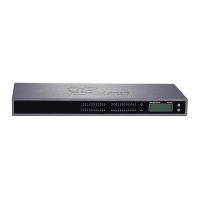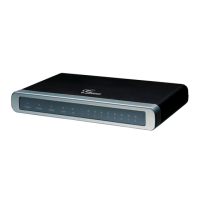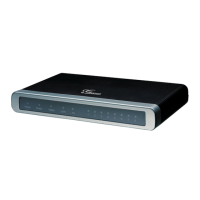FIRMWARE VERSION 1.0.9.1 GXW40XX USER MANUAL Page 54 of 60
Time period when the cradle is pressed (Hook Flash) to simulate FLASH. To prevent
unwanted activation of the Flash/Hold and automatic phone ring-back, adjust this time
value.
On-hook timing is the minimum time for an on-hook event to be validated.
Handset volume adjustment. RX is for receiving volume (direction FXSto analog
phone), TX is for transmission volume (Analog phone to FXS). Default values are 0dB
for both parameters. Loudest volume: +6dB Lowest volume: -6dB.
Configure ring cadences according to preference.
SAVING THE CONFIGURATION CHANGES
After user makes a change to the configuration, press the “Update” button in the Configuration Menu. The
web browser will then display a message window to confirm saved changes.
Grandstream recommends reboot or power cycle the IP phone after saving changes.
REBOOTING FROM REMOTE
Press the “Reboot” button at the bottom of the configuration menu to reboot the phone remotely. The web
browser will then display a message window to confirm that reboot is underway. Wait 30 seconds to log in
again.
CONFIGURATION THROUGH A CENTRAL SERVER
Grandstream GXW40XX can be automatically configured from a central provisioning system.
When GXW40XX boots up, it will send TFTP or HTTP/HTTPS requests to download configuration files,
“cfg000b82xxxxxx” and “cfg00082xxxxxx.xml”, where “000b82xxxxxx” is the LAN MAC address of the
GXW40XX. If the download of “cfgxxxxxxxxxxxx.xml” is not successful, the provision program will issue
request a generic configuration file “cfg.xml”. Configuration file name should be in lower case letters.
The configuration data can be downloaded via TFTP or HTTP/HTTPS from the central server. A service
provider or an enterprise with large deployment of GXW40XX can easily manage the configuration and
service provisioning of individual devices remotely from a central server.

